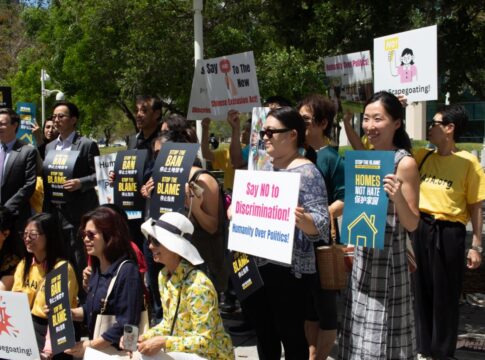Growing up, I always felt like I was living in two worlds. I was born in America to Indian parents, but never quite felt “American” enough to relate to the popular blonde girls at school. At the same time, I didn’t identify with my Indian-born peers. We were all the same, and yet completely and wholly different.
There was no box I fit into, no archetype of the person I was. My classes didn’t have Indian authors on the curriculum. I didn’t have Indian American teachers. I saw no one who helped make my education more approachable, nor did I realize that it was an option to even be included. I wasn’t alone in this idea.
I found myself an enemy of one of my worlds. The world of my mother’s saris and my father’s kurtas—I wanted nothing more than to blend in, to be unrecognizable. I felt the need to distinguish myself from the “others” who were Indian and only hang out with those who had assimilated like I had. My personality became incredibly self-deprecating. It is one of the few things that I truly regret, to this day.
My actions were symptomatic of a person who didn’t fully understand who they are and why their culture is so valuable. They were the actions of someone who believed their background was “less than,” even if I couldn’t have named that at the time.
LATEST STORIES
As I advanced through school I was introduced to authors like Jhumpa Lahiri, Vikram Seth, Naomi Shihab Nye. Authors who echoed my fears, my dreams, my thoughts—painting for the first time, a shared experience. It slowly became clear how my heritage made me unique and powerful, and how it equipped me with a special perspective to serve others.
It was with this desire to serve that I joined Teach For America and became an eighth grade Creative Writing teacher in Memphis, Tennessee. As an Asian American teacher, I’m honored to give students who, like I did, may not be sure where they fit in a positive leadership example. It’s the sort of small thing which can make all the difference in a student’s life – helping them form positive self-identities and visualize futures full of whatever they can dream up.
Unfortunately, the majority of our Asian American-Pacific Islander (AAPI) students don’t see teachers who look like them. Less than 2 percent of teachers nationwide identify as AAPI. This is a shame, because our AAPI teachers have the potential to be relatable voices for AAPI students and their families, advocating for representation and bringing attention to the assets of our communities within our education systems. Our non-AAPI students also benefit from interacting with someone from a background they may not otherwise engage with on an everyday basis – teaching our students tolerance, respect, and openness for those who are different than us.
I’m proud to be part of an organization partnering with AAPI organizations and communities to further  advocate for students, and strengthen and sustain the pipeline of AAPI educators through collaboration on teacher recruitment, training, and leadership development pilots. Since launching its Asian American-Pacific Islander Initiative in May 2014, Teach For America has worked with AAPI leaders and organizations such as the Asian Pacific Islander American Scholarship Fund to explore the unmet needs, assets, and opportunities of their students. The organization is working to build upon the 6 percent of corps members who identify as Asian American, Native Hawaiian, and Pacific Islander during the 2014-15 school year.
advocate for students, and strengthen and sustain the pipeline of AAPI educators through collaboration on teacher recruitment, training, and leadership development pilots. Since launching its Asian American-Pacific Islander Initiative in May 2014, Teach For America has worked with AAPI leaders and organizations such as the Asian Pacific Islander American Scholarship Fund to explore the unmet needs, assets, and opportunities of their students. The organization is working to build upon the 6 percent of corps members who identify as Asian American, Native Hawaiian, and Pacific Islander during the 2014-15 school year.
This summer I had the opportunity to join over 100 AAPI educators in Oakland, California for Teach For America’s first-ever AAPI Corps Member Summit. It was eye-opening to see, for the first time, the AAPI narrative at the forefront of the education dialogue. It can be difficult in a world of dominating majorities and minorities to feel your voice be heard – at the conference, not only was my voice heard, it was encouraged









RE: Asian American Pacific Islander teachers play a critical role: Advocate to start AA studies in the lower grades….